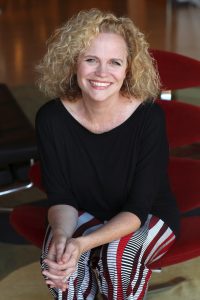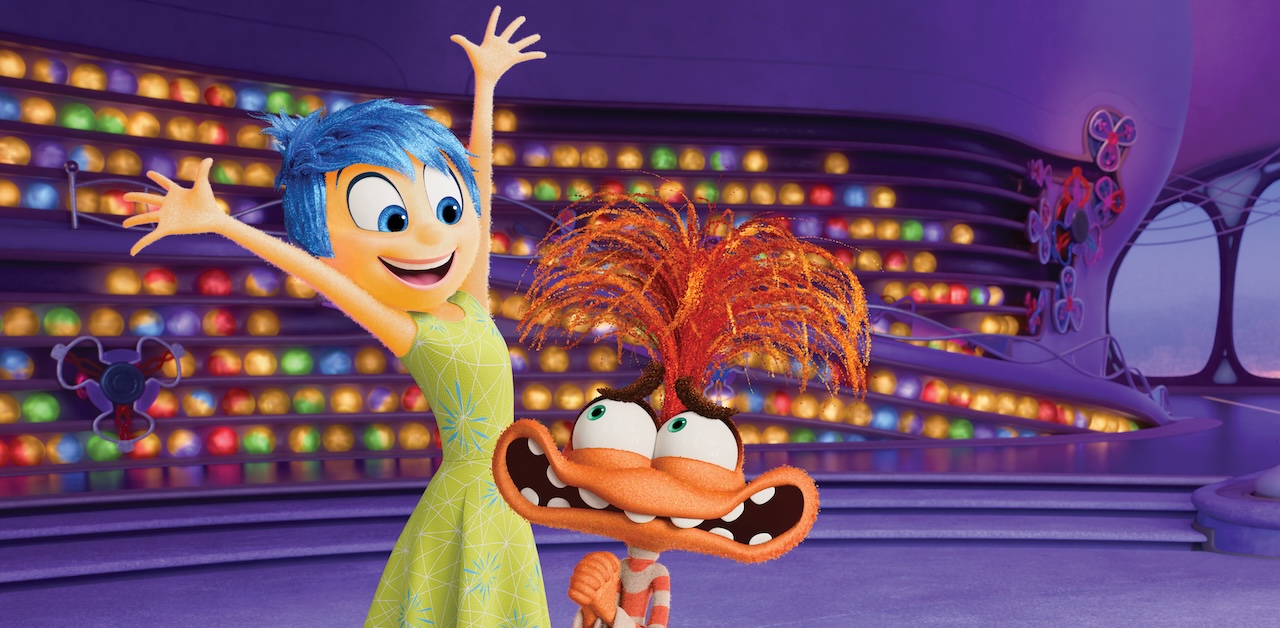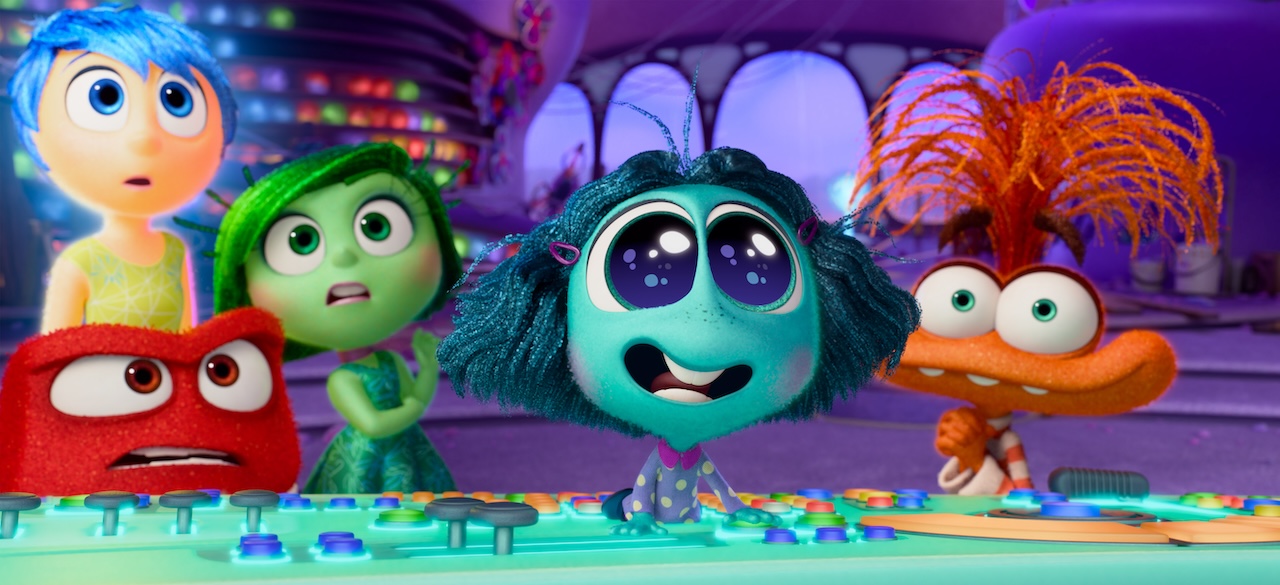“Honestly, and I know it sounds sentimental, but when I became a writer, I held Pixar out as my beacon,” says Meg LeFauve. “At the time, I thought some of the best storytelling was coming out of Pixar and I had heard about the Brain Trust room. I thought the scariest, most thrilling thing I could do is be in that room as a writer with those Story Brains.”
Everybody told Meg it was impossible and that “they don’t even hire writers.” She adds, “But, you have to do what your gut tells you, and you don’t go in a straight line, but I eventually got to go in and meet on a project.” She didn’t get hired on the first meeting, but did land the job on Inside Out.
Dave Holstein says, “In college, I remember watching the short film collections from Pixar and being endlessly moved by the work they were doing and that was one of my big career goals. 1. Run a TV show. 2. Write a Pixar movie. These things seemed too far away.”
Holstein initially met on Toy Story 4, didn’t get the first job, but was asked to meet on Onward and then, Inside Out 2. “It was a great combination of scheduling luck and having been on their list for a long time.” The screenwriter created the Jim Carrey series Kidding between Pixar meetings.

Meg LeFauve. Photo by Deborah Coleman / Pixar
Neither writer had a background in animation before meeting with Pixar. “My understanding is [that Pixar] is looking for people who can write character, theme, and are funny. They also have a building full of storyboard artists but sometimes need help with structure.”
In other words, Pixar doesn’t look for animation writers. They look to live action writers, at least when bringing in someone new to the mix. “I think that’s all fair,” adds Holstein. “They look at writers who can add what they don’t already have up there. I’ve seen playwrights up there. I’ve seen those great with character, great with structure.”
As far as ongoing work with Pixar, the writers say you really need to be comfortable in a writers’ room and you need to be able to think and pitch ideas on the spot. “It doesn’t mean you have to come from television, but there’s that element to it. You’re with the director and you come out of a screening and you have to pitch ideas how to fix it on your feet.”
Many writers start as “weekly” pitchers. “They want to know if you fit into this flow. Can you pitch on your feet? A lot of writers listen and then pitch so there’s no one way to do it, but that’s an element of working there that isn’t for all writers,” confirms LeFauve. “Like TV, the job is to serve a greater vision,” mentions Holstein.
Writing Inside Out 2
It’s been nine years since the first film, but Riley who turned twelve at the end of Inside Out is now thirteen for Inside Out 2. “That puberty alarm is going off,” jokes LeFauve. “She’s a teenager.” Director Kelsey Mann (former Pixar animator) describes puberty as a “wrecking ball coming in the back window.”
“He was very interested in those rapid changes,” she continues. “You can’t control yourself in terms of emotions and he was very interested in anxiety entering the fray. When you become a teenager and pre-teens, you’re conscious that other people are judging you. That amps up so high – that self-awareness.”
The original pitch from Mann had different pictures of himself as a teenager. LeFauve adds, “You could literally watch him kind of retreat. He was this smiley kid and by thirteen, he looked like he could die that everybody was giving him so much attention. It was very powerful to see those images and that moment of self-consciousness.”
There were some obstacles in the sequel that came from rules in the first film. “People think sequels are easier,” jokes Holstein, “but you’re always up against the rules you create in the first movie.” The tag line, “Make room for new emotions” highlights the new characters, even though we do not see them in the minds of the parents in the first film, as one example.

Dave Holstein. Photo courtesy of JSquared Photography/ Contour by Getty Images
“That issue is explained in the movie, but basically there are plenty of emotions that are not as present as they are in that age. They are in the waiting room. They weren’t absent but they weren’t as active,” he adds. “And parents don’t have anxiety,” jokes Holstein.
“We had to earn it with Pete Doctor,” says LeFauve. “Bringing in new emotions wasn’t just a given. At first, he was like, where have they been? You really have to talk to him about where they were, how much access they had, and who are they?” Originally they had “too many” new emotions and even went to the emotion “waiting room,” but decided to cut back for simplicity.
The New Emotions
The new emotions are Anxiety (Maya Hawke), Ennui (Adèle Exarchopoulos), Embarrassment (Paul Walter Hauser), Envy (Ayo Edebiri), and Nostalgia (June Squibb). “You really had to follow the rules of the world to put in anything.”
LeFauve jokes, “Who the hell came up with this rule? I hate them. It’s so hard. And then I was like, that’s right, it was me. Sequels are hard.” Holstein had to play catch up on some of the rules, such as, “Someone always has to be on dream duty.” But, because Riley was changing, some rules could slightly change too.
“In some shows you’re playing three-dimensional chess. I would argue that in this movie we were playing four or five dimensional chess between the rules and various worlds,” he continues. Describing what sounds like the end of Inception, the writers say each level must interact with one another.
“There’s so many levels to the world. There’s what’s happening to Riley, what’s happening in headquarters, what’s happening to Joy out in the mind, and they each have to affect each other.” This means many of the early notes were about this level connection. “If we’re in this land, how is it affecting Riley?” Or “How is Riley shifting the land?”
The “high story math” is doing this so well that no one thinks about it. “You don’t want them to think about it. You want them to be so drawn into the story.” Simultaneously, it has to link to the first film “without attracting the comparisons.” This leads to a battle of “geography,” “repetition,” and “formula.” Holstein adds, “You have to escalate it and find a more satisfying way through it.”
Two other mindspace places that didn’t make the final cut were Puberty Park and Procrastination Land because they didn’t necessarily relate strongly enough to the characters’ journey. The same is true for characters like Shame and Guilt, which in the end, were just too difficult to explain.
Studies in Psychology
“People ask this all the time: how do you write animation for children? That’s not my experience at Pixar. It’s about what you get as a human being. There’s slapstick, but that’s because adults like it too. In terms of research, we research what’s happening at thirteen, anxiety in girls this age, but I never thought about that. It’s just about the human condition.”
“I never thought about writing for kids,” adds Holstein. “I think that there are a lot of parents in that building at Pixar and in this movie. We’re looking at the emotions as parents to Riley, or as caretakers. That’s the most emotional way that I can see their stories. Joy is there to take care of Riley and anything she does that hurts Riley is the equivalent of a parent hurting their child.”

Jou (Amy Poehler) & Anxiety (Maya Hawke) Photo by Disney/ Pixar
In the first film, concepts like Core Memory came up in the writing process. It helps children and adults attach words to their feelings. “Core Memories is not something that was researched. It came up in the room out of sheer panic one day. What were [the emotions] trying to protect? And now people say Core Memories like it’s a thing. It was writer’s panic, but belief systems are a thing.”
Holstein adds, “There’s something interesting about the Core Memory concept and how it relates to screenwriting, which is, I think when you’re writing a script and you get technical, there’s a fear you’re getting too ‘inside baseball’ and leaning into a term no one is going to care about. But what a great example of a term that is technical, but clearly resonated with everybody is now part of the lexicon.”
For the second movie, in addition to psychology research, they also had Riley’s Crew, which was a group of teenage girls who took notes and provided advice for the film.
Is This Sequel-worthy?
In the first film, and with all Pixar films, the question was: “Is this the best story we can tell?” That was true for the sequel, but also, “Is this sequel-worthy?” LeFauve adds, “I know people get cynical about sequels, for box office or whatever, but at Pixar, it has to be sequel-worthy as a story. You have to do a lot of work to prove to the team it’s worthy of a movie.”
“I think you’re weaving this tapestry and art and humor, trying to find the universal story,” Holstein adds. “My favorite Pixar movies aren’t just like, what if emotions had emotions? They’re these universal truths that you can only hit when you have the resources and goals of people at Pixar.”
Holstein describes this as “Pixar patina.” He says, “They’re willing to go there and let you as the artist lift and elevate. It’s rare that the goal is to be beautiful and poetic. When people leave a Pixar movie, it’s beautiful and touching. What is that Pixar moment? How do you elevate the story to a place where you’re elevating Anxiety and leave people with that Pixar patina as they leave the film?”
Back to their original “beacon” of wanting to work with Pixar, LeFauve advises screenwriters to focus on beacons that are “thrilling, but challenging.” She adds, “If you say Academy Award, you kind of have no control over that and it’s not going to challenge you as a writer. Sitting in the Brain Trust is going to challenge you and it’s thrilling. And, you have to love your characters and know what you love — even if it’s a moment or a line — because it’s going to be a haul.”
Holstein adds, “As I’m getting older, maybe time is moving quicker, but I’ve accepted that some things have a nine-year-timeline. Getting Kidding on the air took seven or eight years. That’s the nature of writing.” LeFauve adds that everyone else will tell you not to look at your feet, but Holstein tells people, “You don’t look up.”
“If you, the writer, actually looks up,” he explains, “and you see how much more ladder you had to climb or how many scripts you have to write, it’s so daunting. What’s nice about being a writer is that you can just look at the page. It’s just that line of dialogue. It’s brick by brick. Building and re-building. But when you zoom out wide enough and you can’t count how many scripts you’ve written, I think that’s when time conflates at the end.”
This interview has been condensed. Listen to the full audio version here.

